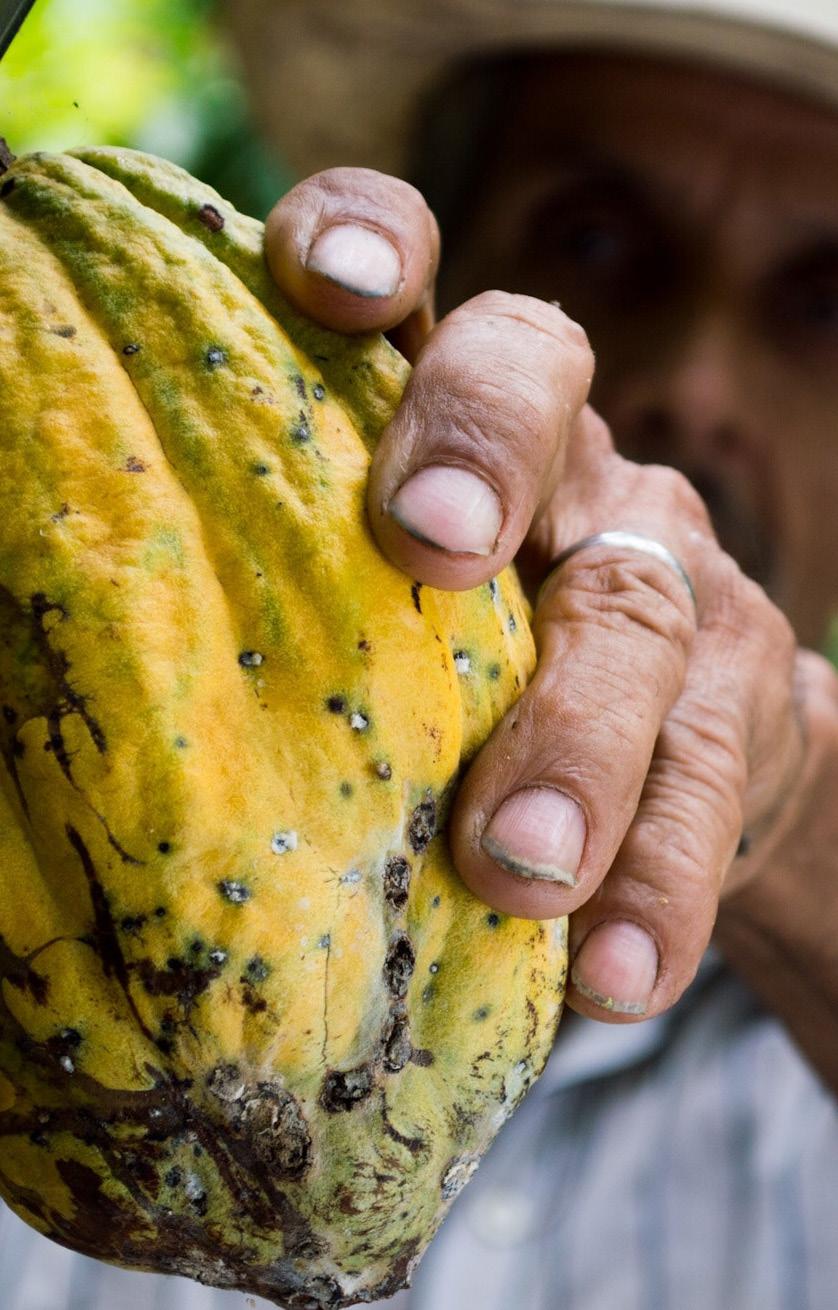
4 minute read
2. CO-PRODUCTION OF INNOVATIVE BIODIVERSITY GOVERNANCE BY ALL
The report on governance takes an innovative perspective and focuses on multidimensional, multilevel and multi-stakeholder processes. It considers all institutions, rules, processes, networks and stakeholders that formulate, participate in and implement decisions designed to change the current structures and paradigms that have a negative impact on biological diversity. For this purpose, it uses the four approaches proposed by the IPBES in its report5 on Biodiversity and Ecosystem Services published in 2019: integrative, inclusive, informed, and adaptive
Innovative governance is a transversal lever in the GBF. The study analyzed 9 of the 10 case studies identified in the report on biodiversity mainstreaming in Latin America and the Caribbean from Brazil, Chile, Costa Rica, Guatemala, Mexico and Peru. It also focused on an additional case from Colombia. It assessed how the four approaches mentioned above have been implemented in projects in the agriculture, fisheries, forestry, financial, manufacturing, infrastructure, and tourism sectors. The paper has a strong focus on bottom-up experiences, focusing on projects built with a strong and active participation of agents of change like IPLCs, women and youth.
Advertisement
6 See Belize: Swapping Debt for Nature. (2022) International Monetary Fund. Link: https:// www.imf.org/en/News/ Articles/2022/05/03/CF-Belizeswapping-debt-for-nature
7 See Debt-for NatureSwaps: Feasibility and Policy Significance in Africa’s Natural Resources Sector. (2022) African development Bank Group. Côte d’Ivoire.
8 https://www.biodev2030.org
Both studies share many of the identified challenges and lessons learned. Additional difficulties across the cases studied include:
+ very limited human and financial capabilities and coordination in the public sector;
+ strongly centralized public procedures that are supposed to enable support for the territorial implementation of biodiversity projects;
+ lack of regulations with a territorial approach or with locally adapted frameworks;
+ necessary transdisciplinary, biocultural and landscape visions rarely adopted;
+ policy and operational coherence not always moving at the same speed;
+ fair and equitable sharing of benefits arising from genetic resources requires strengthening and decisive management by States to promote wider implementation.
Based on the numerous good practices found in the study, we can also conclude that:
1. The sustainable use of biodiversity using a territorial and biocultural approach must be considered as an effective conservation strategy. It contributes to a holistic view of humans and nature, for instance by respecting the rights of the direct users of biodiversity on the ground and empowering actors with a direct interest in its conservation.
2. Human and collective rights depend directly and indirectly on the conservation and sustainable use of biodiversity. On the other hand, ensuring human rights can in turn contribute to environment sustainability, particularly through the perpetuation of traditional ways of live. A rights-based approach to conservation implies the strengthening of capacities of those groups with greater disadvantages and less representativeness.
3. The implementation of transformative governance should be catalyzed and enhanced by a proactive public sector, open to an active public-private, and inter- and intra-sectoral participation.
4. Transformative processes in favor of biodiversity require a long-term management, but also legally secured access to natural resources.
Although they weren’t explicitly considered in the projects described in the case studies, the assessment showed that the four approaches recommended by IPBES (integrative, inclusive, informed, and adaptive) were widely applied and could be a useful analytical framework for further planning and monitoring.
3. CROSS-CUTTING TAKEAWAYS FROM COP15 PRESENTATIONS
During a side event at CBD COP15, participants stressed several additional points to move forward. Among the key issues raised were financing, the necessity to align public budgets and the need to explore new tools for financing implementation.
Despite the fact that public budgets are one of the main instruments for governments to implement their plans, the lack of alignment of public funding with public policies on conservation and sustainable use of biodiversity are impeding the achievement of biodiversity goals.
Discussions stressed the necessity, especially in a postCOVID context, to look for new and more innovative forms of financing addressing in particular the issue of debt. One of these instruments may be debt-for-nature swaps6 7, due to their potential to address several issues in parallel. Furthermore the event’s participants underlined the need to better identify projects that could benefit from funding and to enhance their design to improve their results.
On that note, several participants pointed out the importance of building up from the ground. Experiences suggest that developing projects with local communities can strengthen the community while improving their projects’ outcomes. More effort is required to develop indicators that enable to reflect local realities and can help central governments support a better implementation on the ground.
Building from the discussion of the reports and the other cases presented by participants, including from Madagascar and Tunisia (both implemented in the context of the BIODEV 2030 project8 ), three cross-cutting takeaways were identified:
1. Biodiversity pushes us further towards transforming governance. Reforming global value chains and strengthening human rights on the ground must be dealt with simultaneously. In Latin America and the Caribbean, this could be addressed by securing the rights of people that participate in global value chains, especially in extractive activities that negatively impact biodiversity and ecosystems. The key question here is how to further support and strengthen actors that are actively working towards transformative change.
2. Knowledge production plays a key role in supporting transformative change. The LAC region has tremendous in-house expertise when it comes to developing broader instruments for sectors while integrating their interconnections (see further details below).
3. The mutualization of expertise and knowledge in the LAC region and the strengthening of a collective learning between regions are essential. Regional impulses are of utmost importance to implement the GBF. The regional level is crucial to gather knowledge and expertise on common issues, to organize inter-regional learning and to share experiences. It helps to inform on how to best deal with implementation challenges at local level and feeds into international and global discussions.
9 The Coalition was part of the IUCN 2021 Congress. To have more information and its mission and composition see https:// post2020partnership.com/
10 See the report of the Informal Multi-stakeholder Dialogues on the Post-2020 global biodiversity framework for Latin America and the Caribbean. 10 &12 August 2021. https://cutt.ly/A3TLZpa

11 On December 15, 2022, the five UN regional Commissions (ECA, ECLAC, ESCAP, ESCWA, and UNECE) with the support of the Post 2020-EU support project, organized a side event at COP15 in Montreal, Canada, where they presented a joint statement to support the implementation of the Kunming-Montreal Global Biodiversity Framework across their regions. You can find the highlights here https://cutt.ly/ p3UOpoo and the recording at https://cutt.ly/k3TL5yP
12 For more information on the cooperative CoopeSoliDar visit: https://coopesolidar.org/ actividades/proyectos/vigentes/ somoslared/UNECE) with the support of the Post 2020-EU support project,
4POST2020BD.NET
@4POST2020BD




